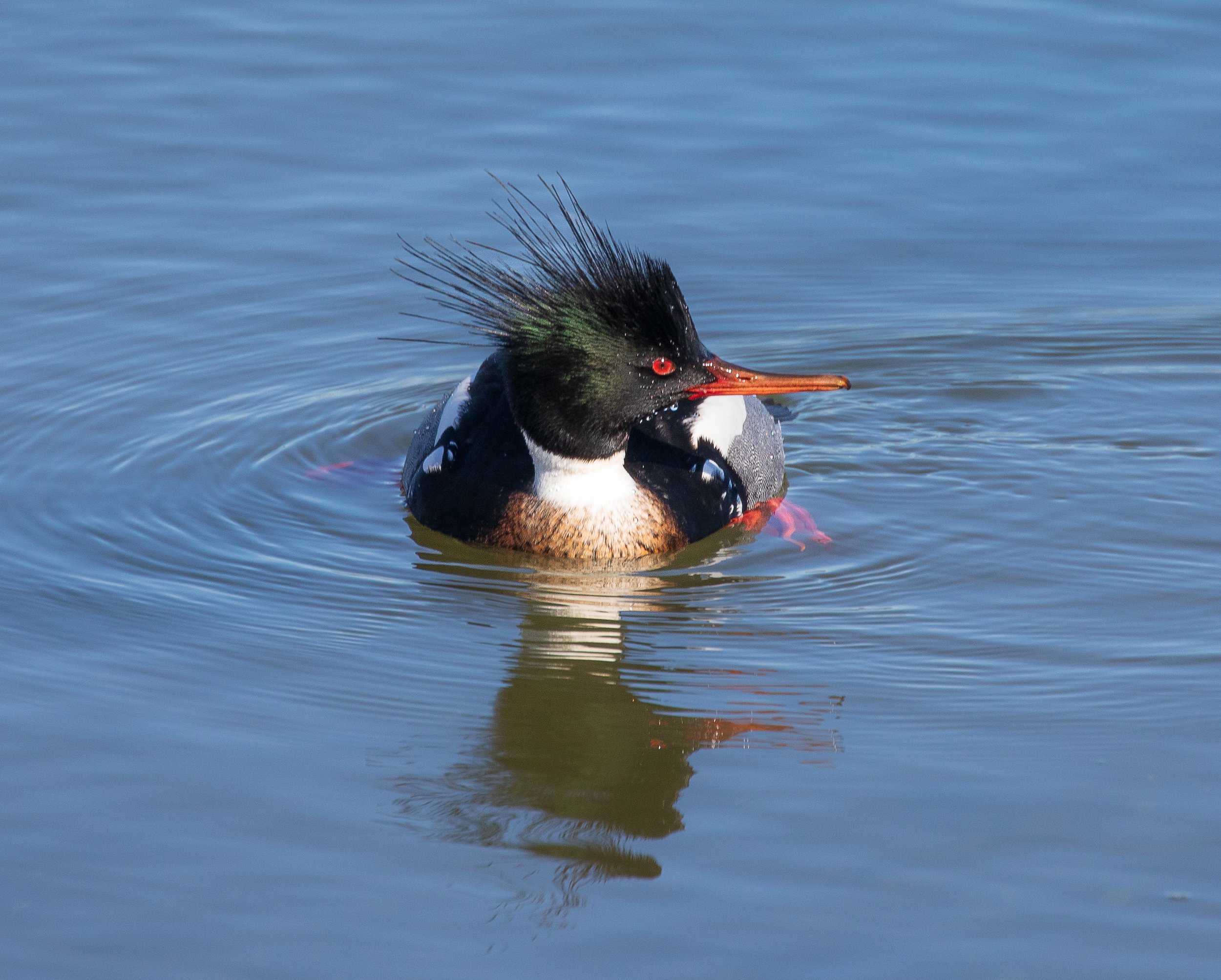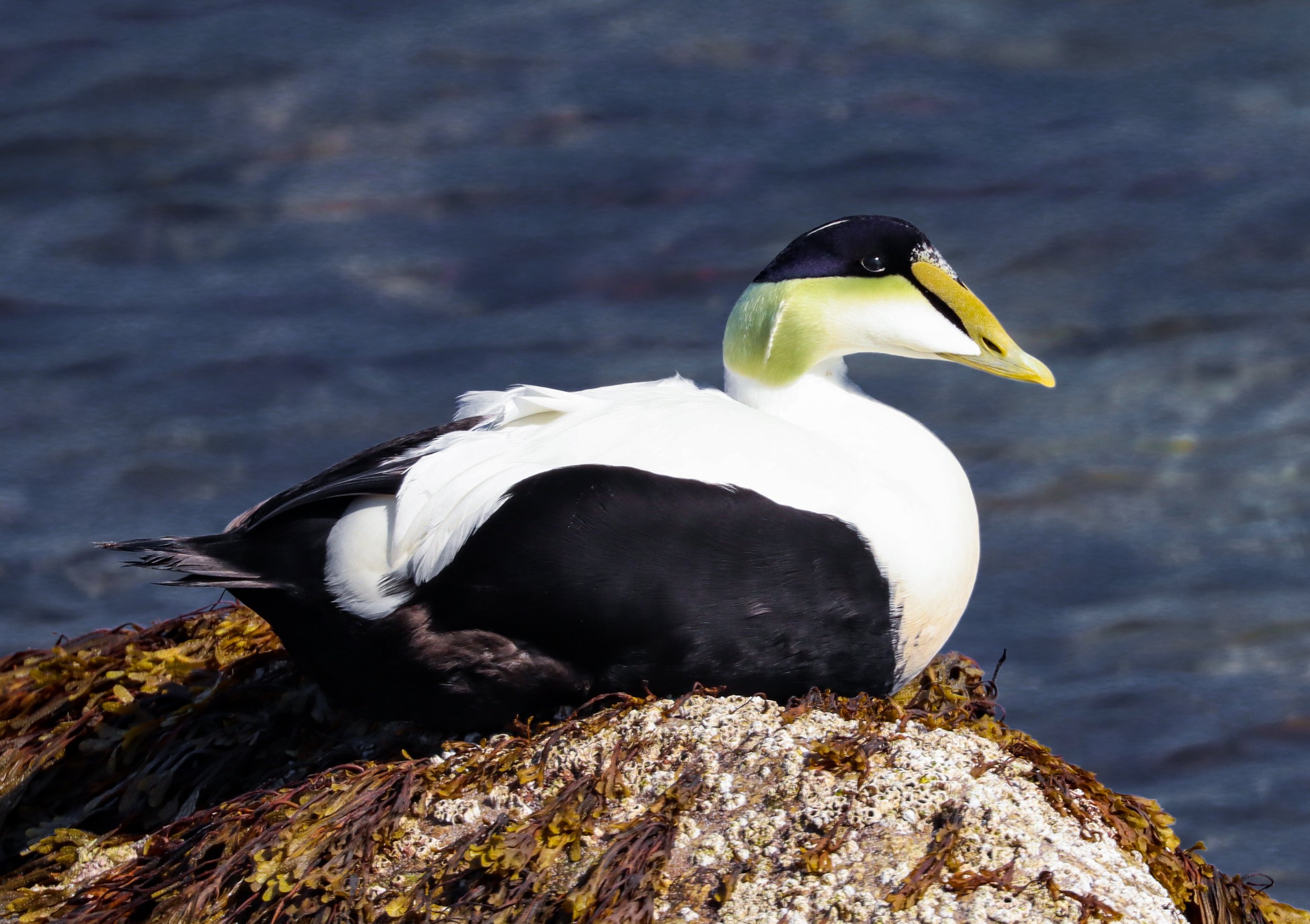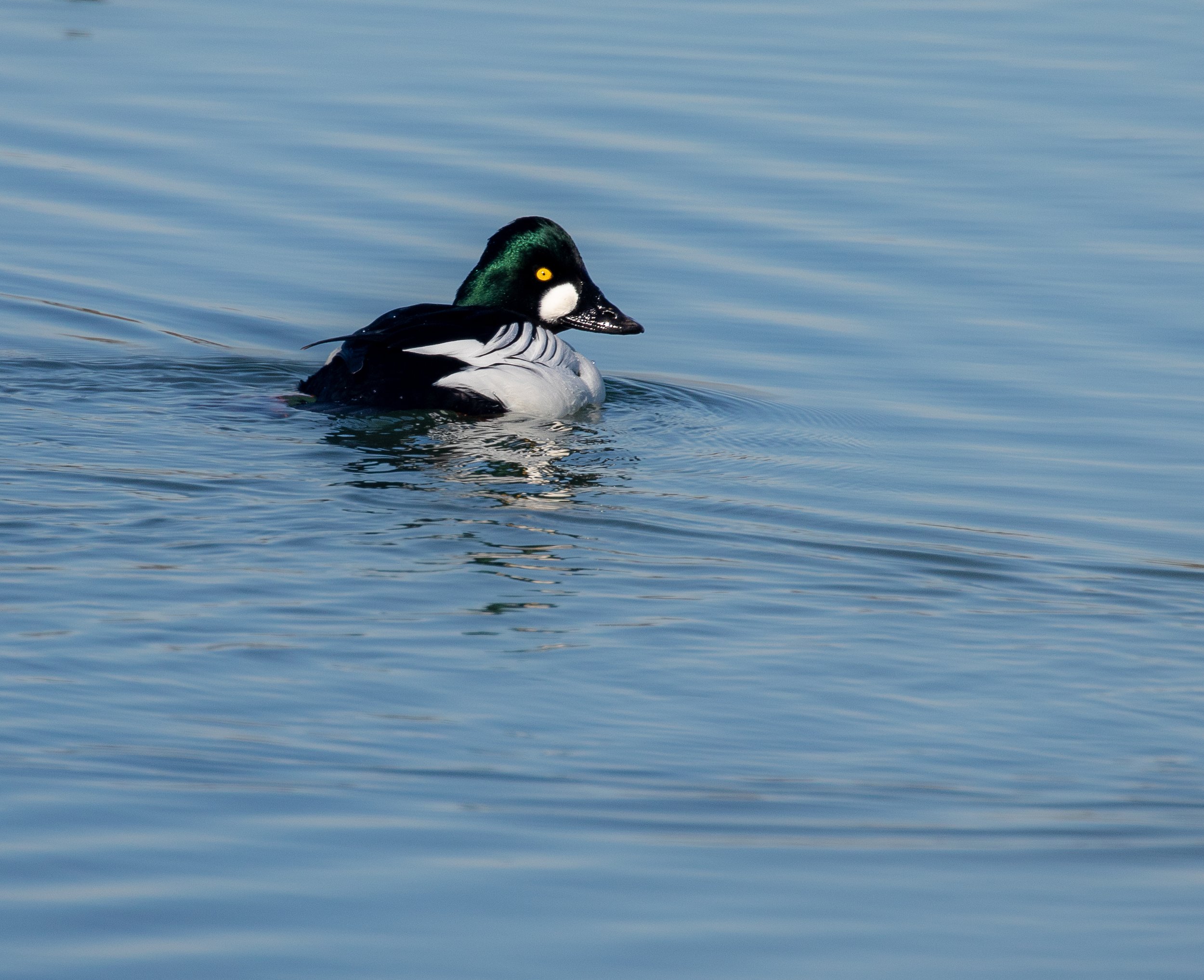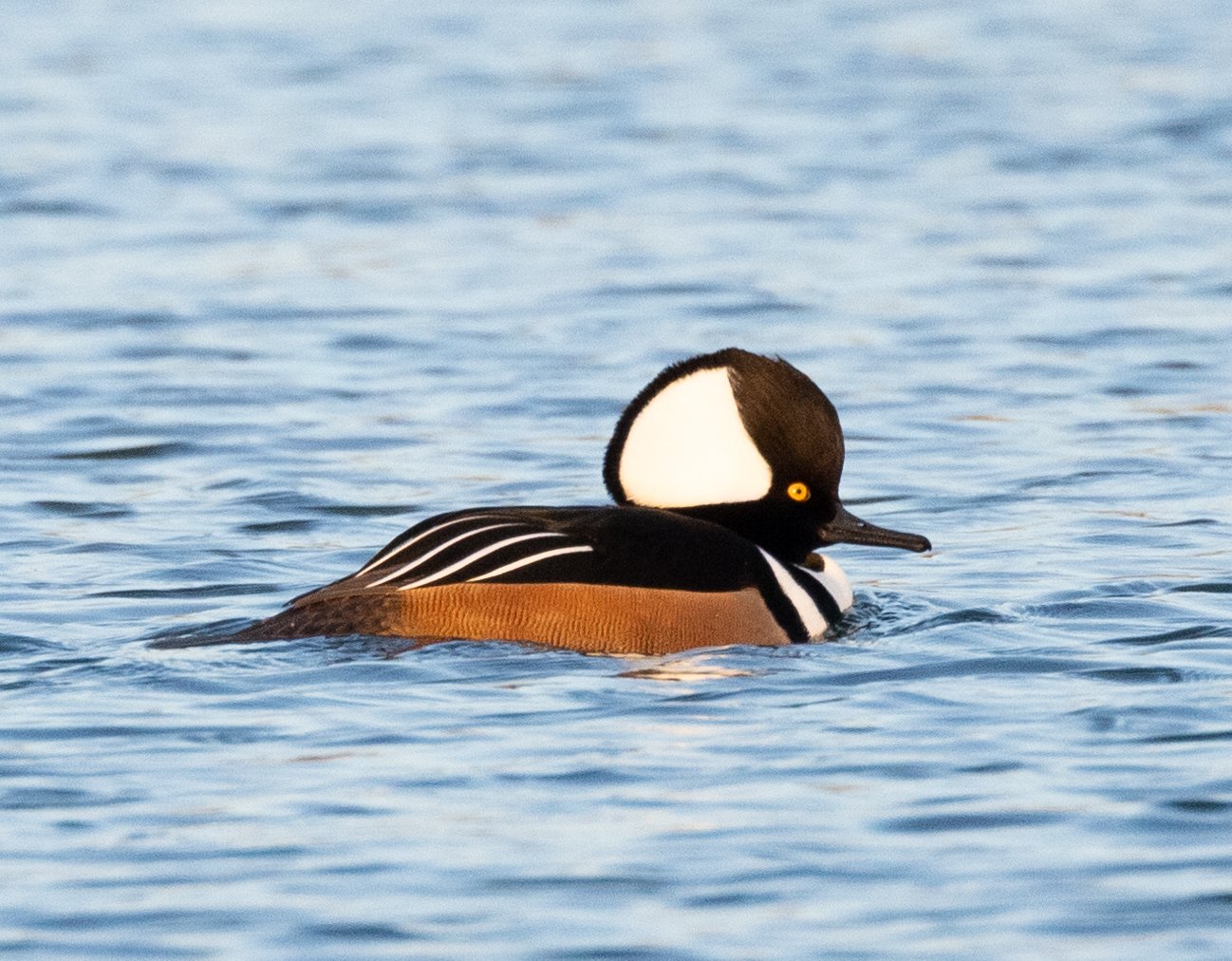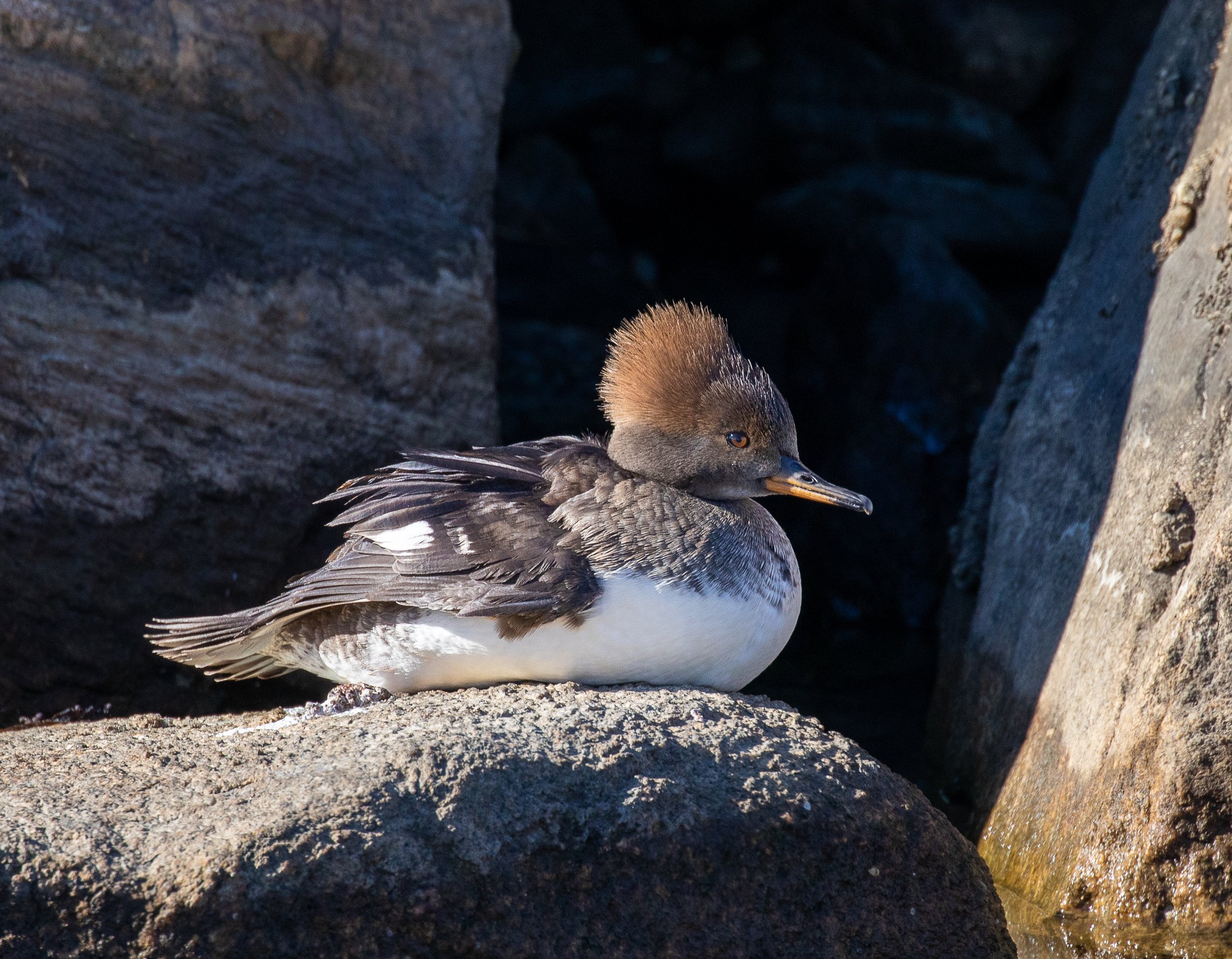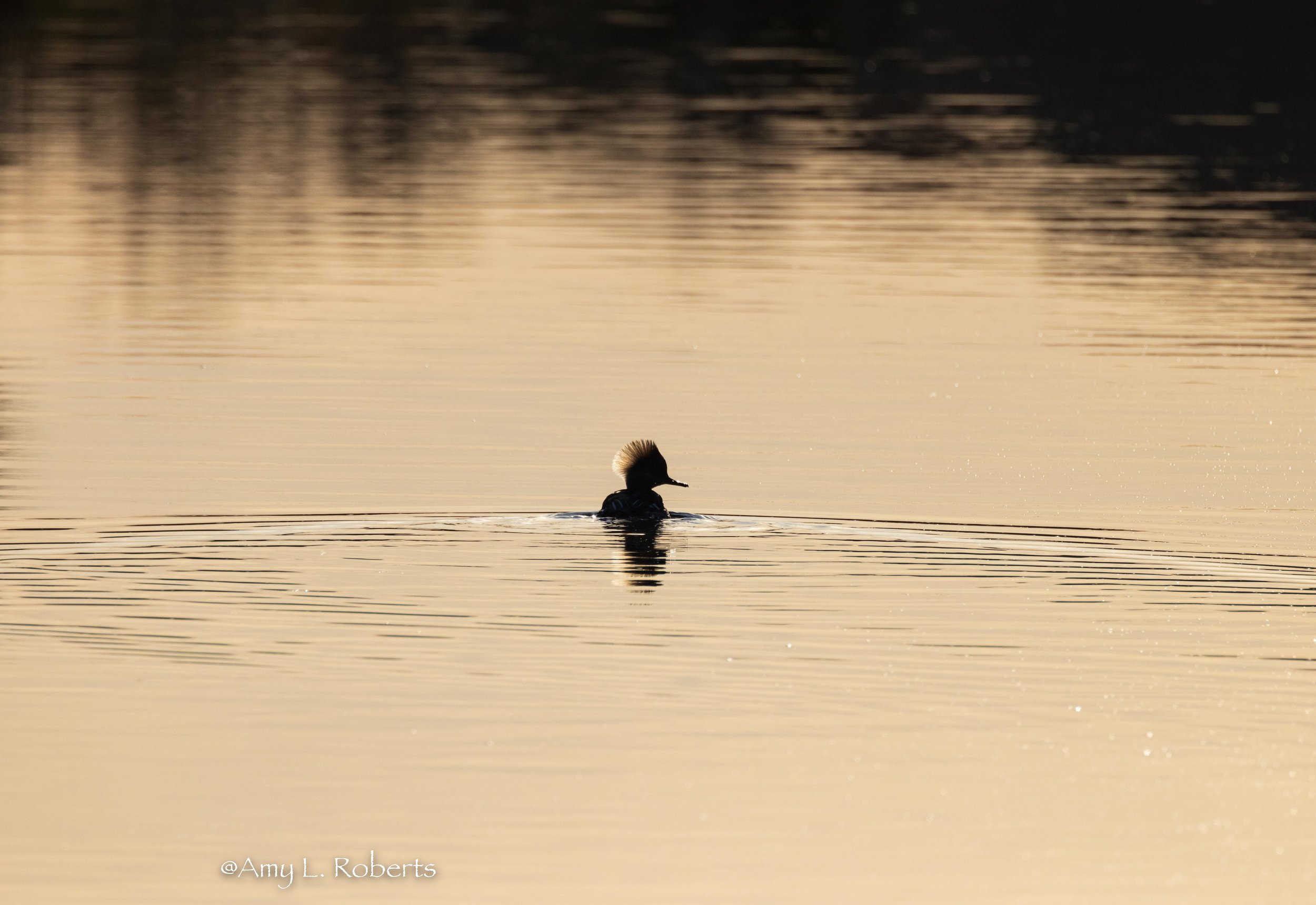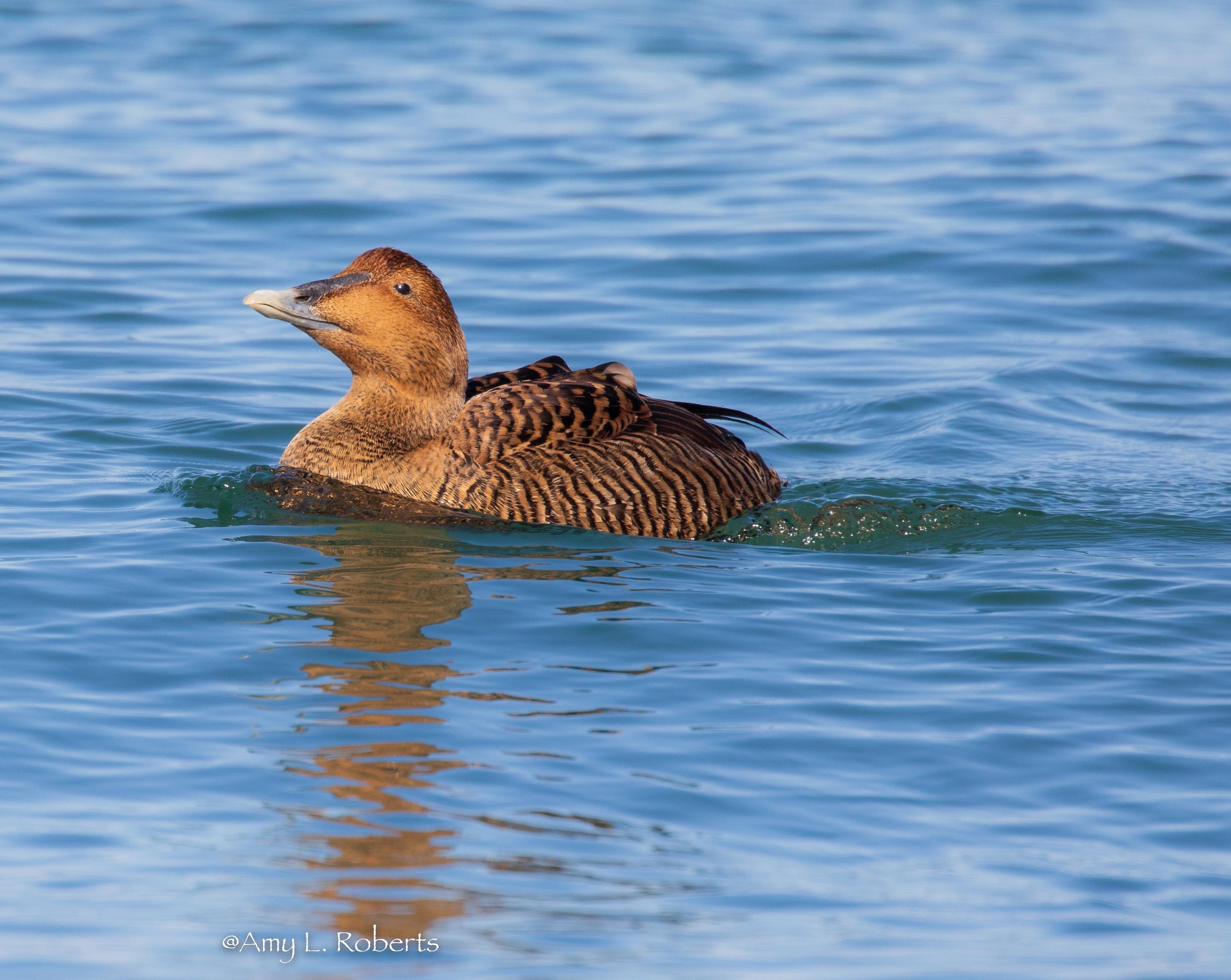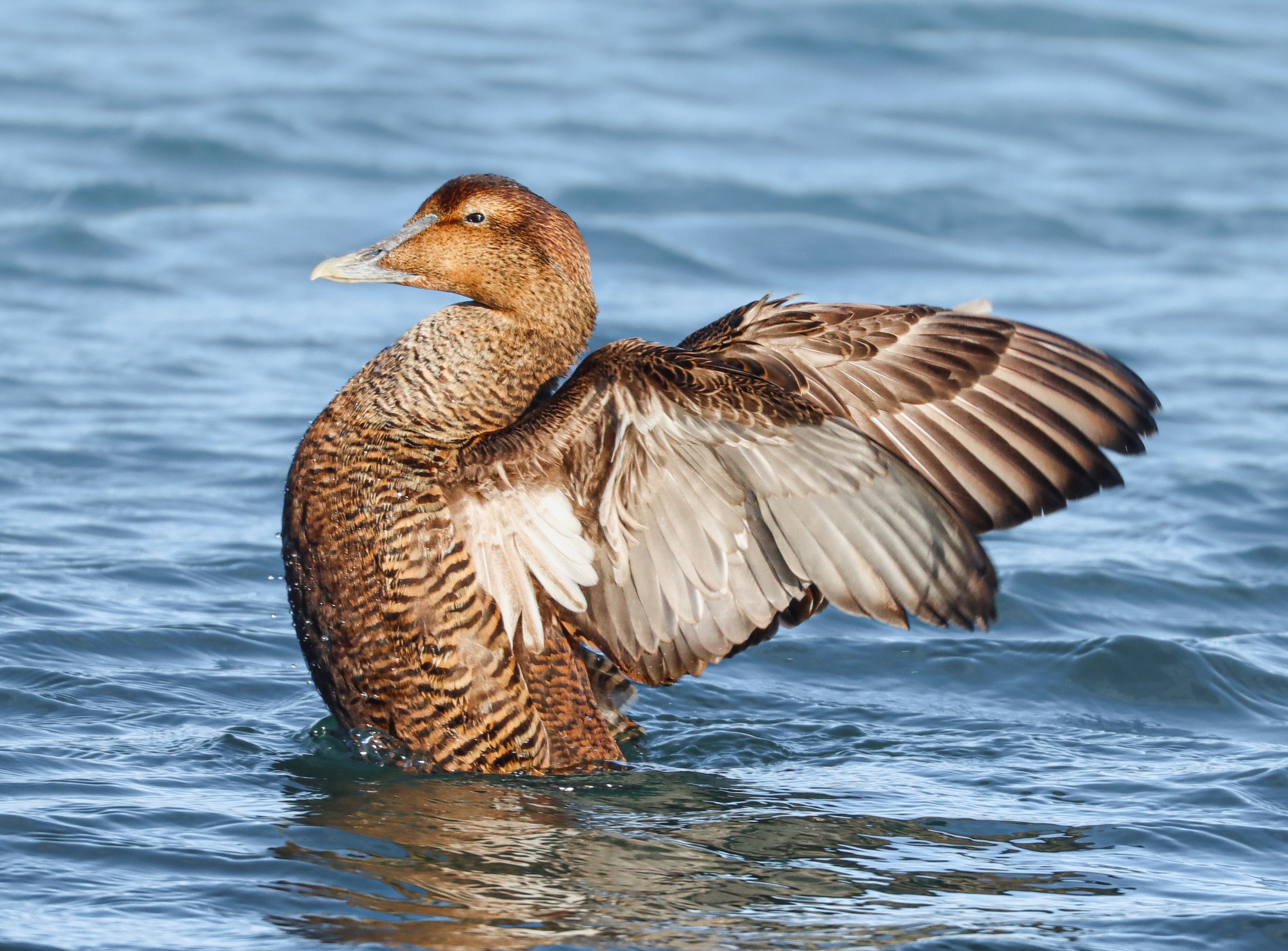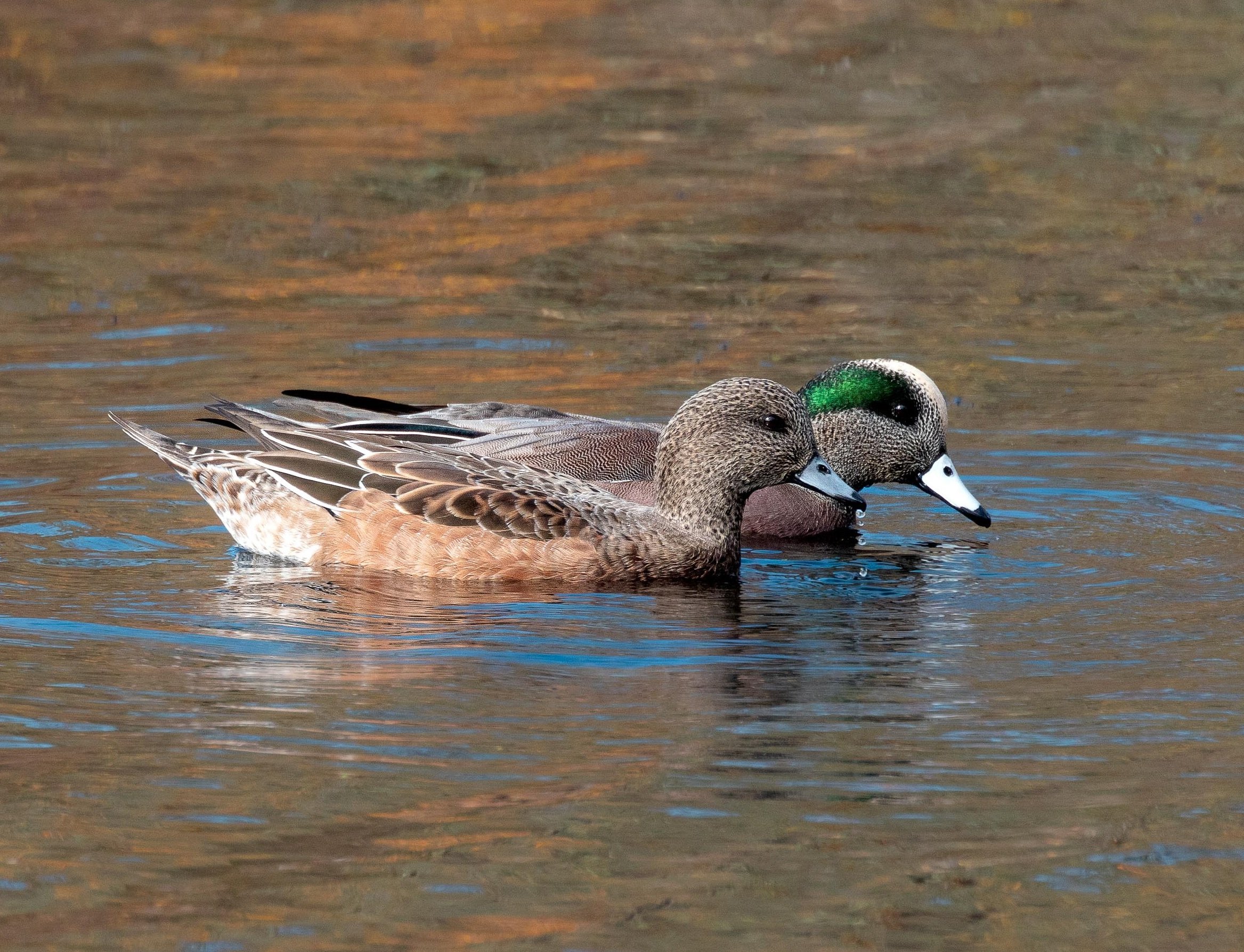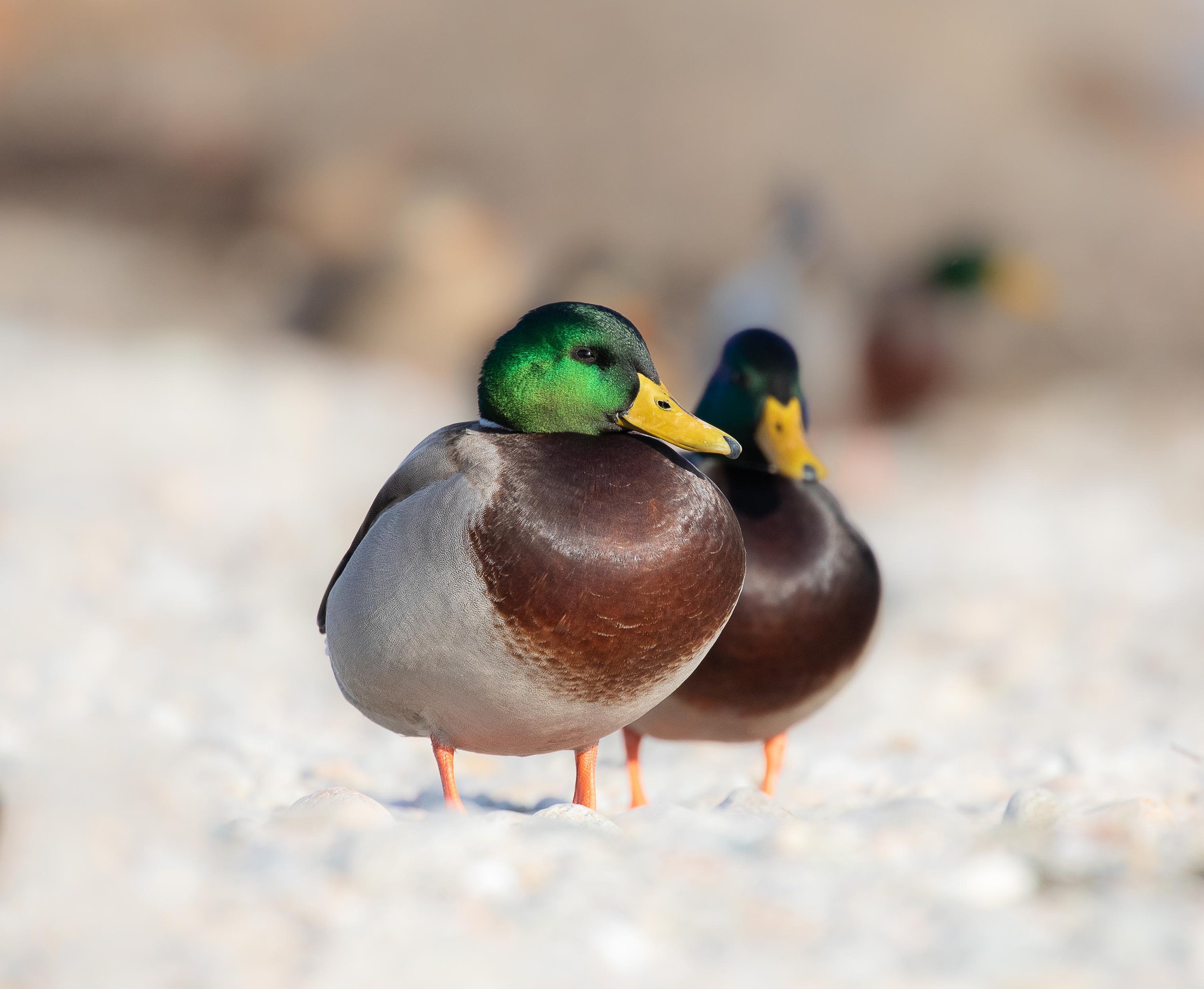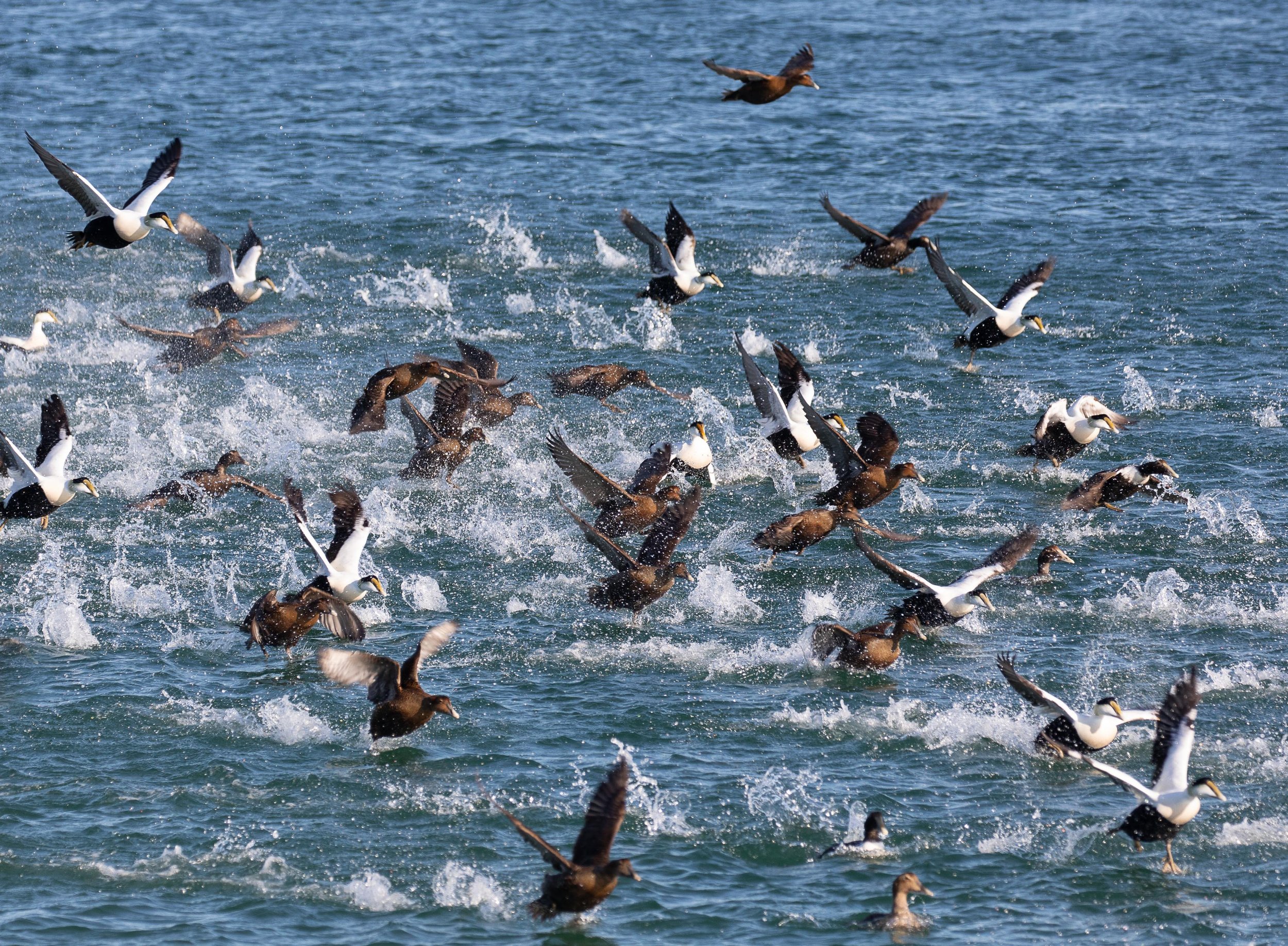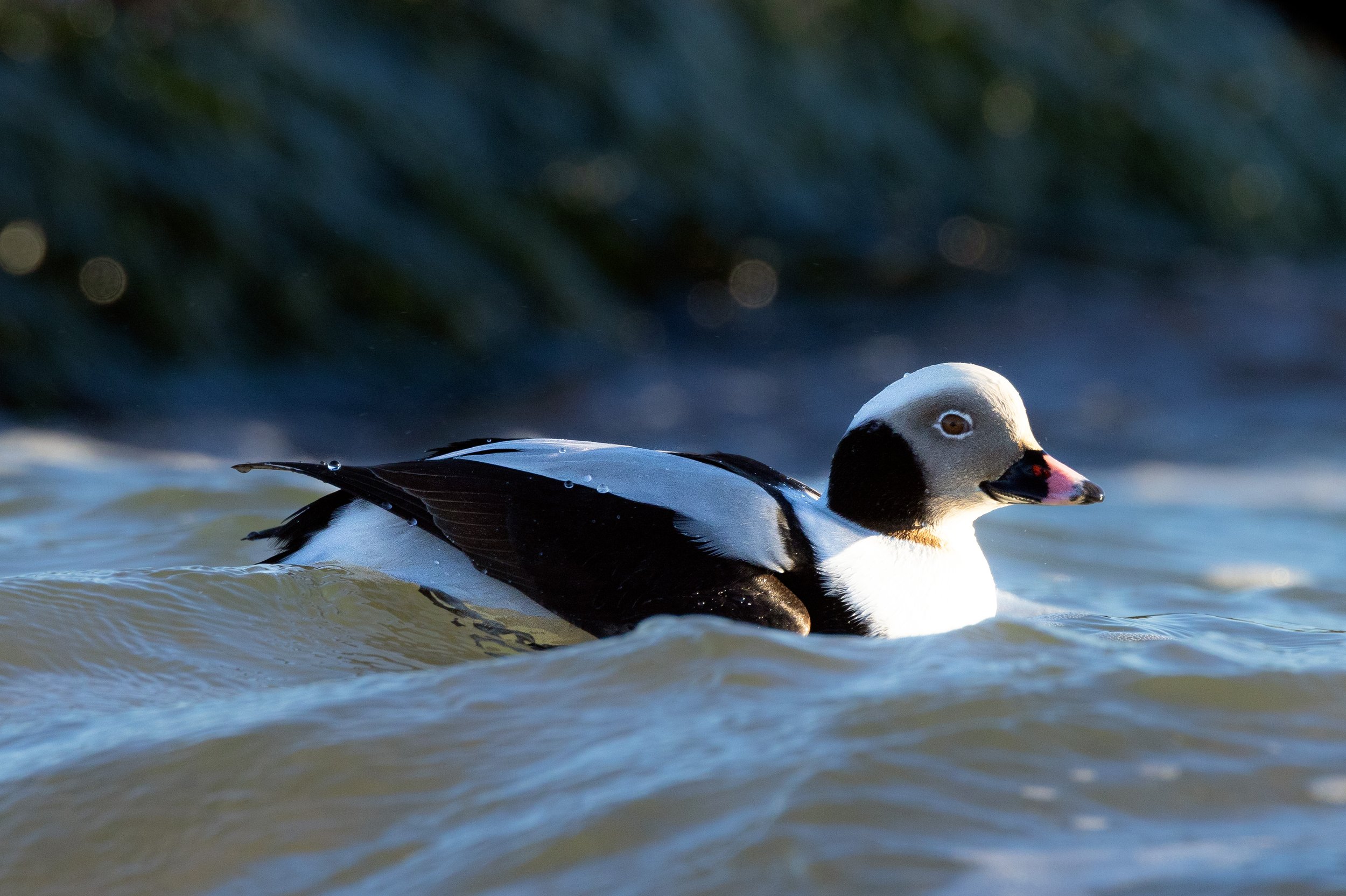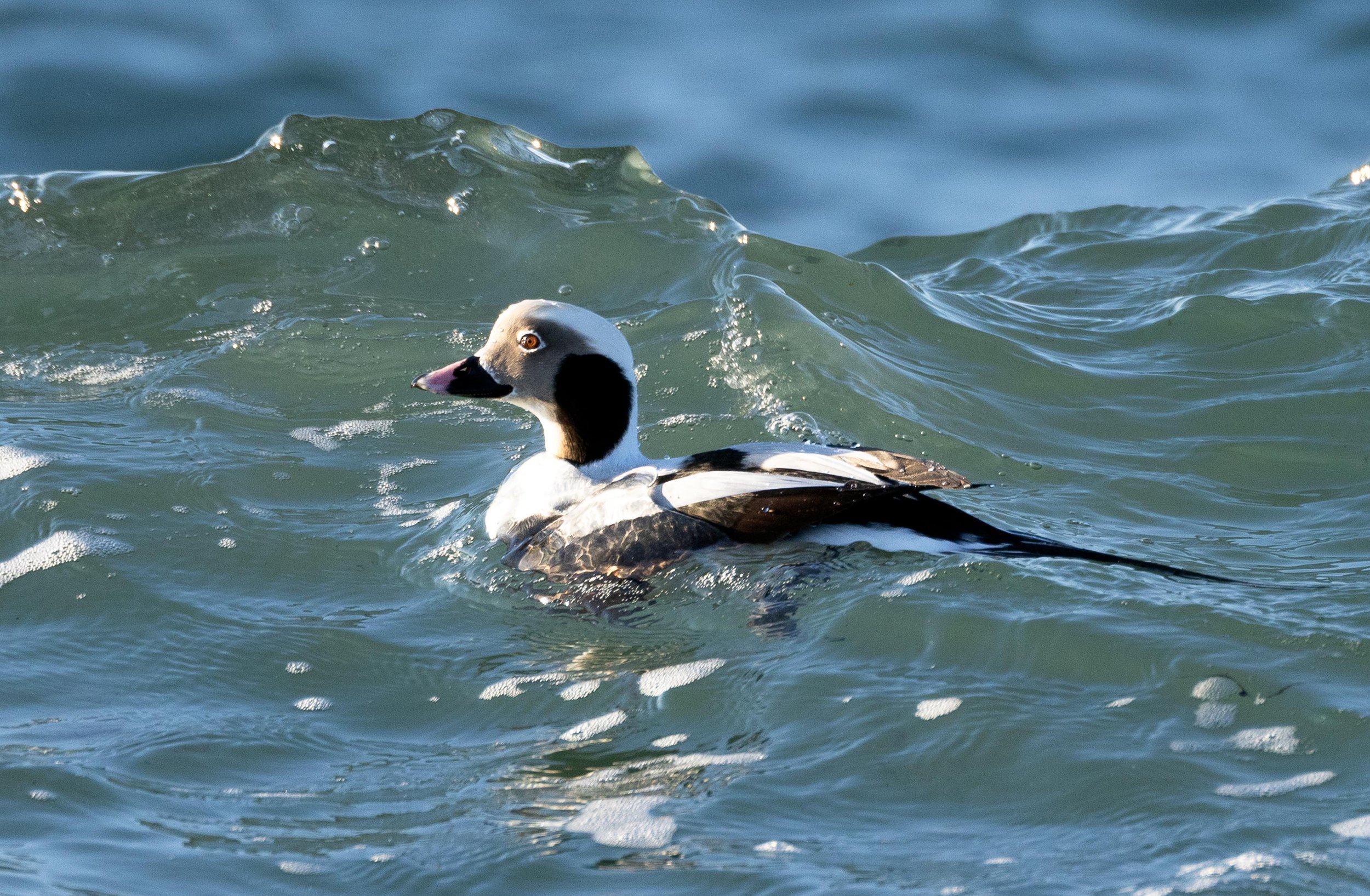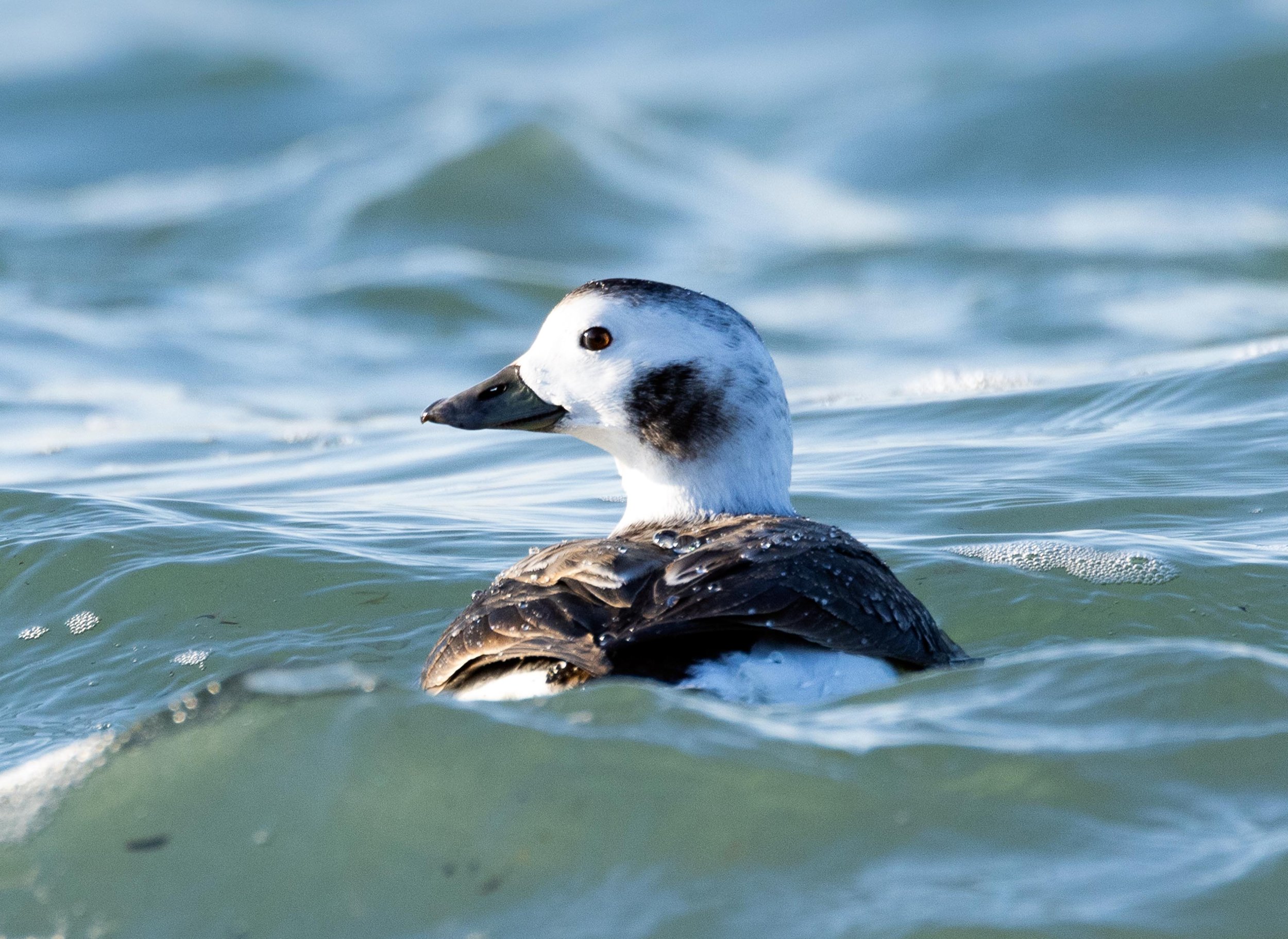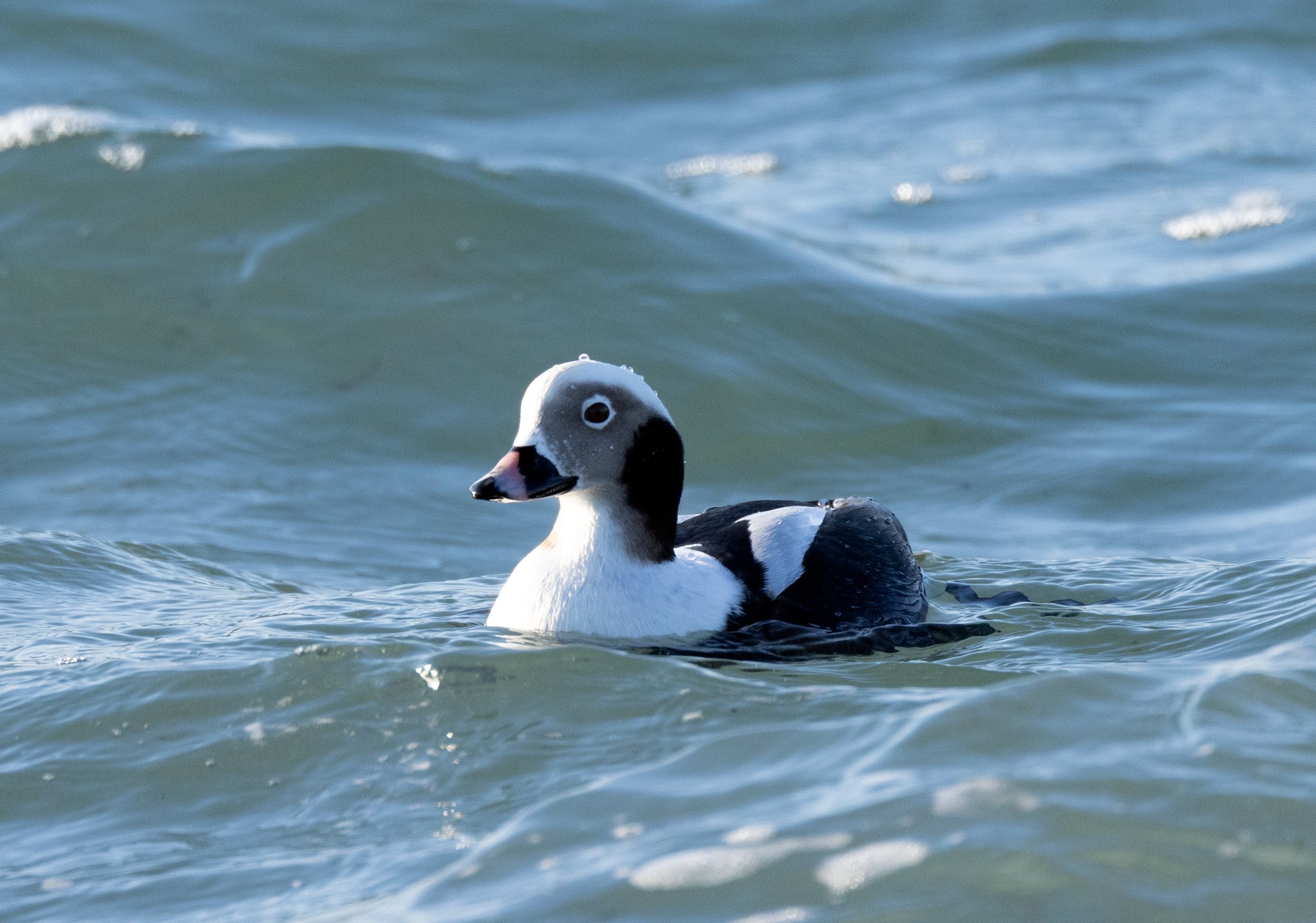Winter Ducks on Cape Cod
A magical transition takes place each year on Cape Cod. As the summer residents and tourists depart this sandy peninsula in Massachusetts, a new flock of visitors arrive from Canada and the Arctic. The glorious winter ducks arrive after their breeding season ends in the north to spend the winter in the abundant, warmer ocean water and freshwater ponds of Cape Cod. For the birder, it may be one of the best seasons to visit this unique and pristine area.
After leaving their breeding grounds in the late summer through early fall to escape the dwindling food and water supply, these winter migrants take up residency along the more than 559 miles of coastline and in over 300 freshwater ponds. It is a thrill to watching the flying flocks over the water and observe the growing rafts of birds in the ocean and on the ponds. By mid-December most of the ducks have arrived and from that time onward through early March, there are abundant opportunities for viewing and photographing birds.
The warmer and food-abundant waters of the Cape provide an ideal harbor for winter and a great place to shore up fat before spring migration. Eiders and Scoters eat clams and mussels from the sandy bottom of the ocean, while the deep diving ducks, such as Long-tails, pick up small crustaceans, snails, and insect larvae. Others, such a Red-breasted Mergansers, eat fish. Ducks that enjoy a more vegetarian based diet, such as the American Wigeon or Ring-necked Duck, have access to the vegetation that grows plentifully in the ponds. Observing these Winter Migrants later in the winter has the added benefit of seeing them engage in their courtship behaviors, often with the goal of having a mate before arriving to breeding grounds.
Long-tailed Duck riding the waves
What you may see: American Black Duck (year-round) • American Wigeon • Barrow’s Goldeneye • Black Scoter • Bufflehead • Common Eider • Common Goldeneye • Common Merganser • Gadwell • Great Scaup • Green-winged Teal • Harlequin • Long-tailed Duck • Lesser Scaup • Mallard (year-round) • Northern Pintail • Red-breasted Merganser • Ring-necked Duck • Surf Scoter • White-winged Scoter
Bird Photography: There is a tremendous variety of winter ducks to photograph and many, many places to enjoy doing so (see the Where to Go section below). There is no doubt, however, that bird photography on the Cape in winter has its challenges. The Cape is cold, there is low light to contend with, cloudy days, constantly moving water, and the famous winds that blow across steadily during the winter months. Dress warmly and be prepared and you will find wonderful windows of clear and calm, and the low light will allow you to take photos at many times during the day. Bring more layers than you think you might need, a sturdy tripod or skimmer, if you enjoy lying flat on the sand to get the birds at their level in the water, and a zoom lens. One last note: I have found that winter birds are not particularly excited to see a human with a camera too close to the water, so it takes patience and time to slowly move into a position that will allow you to capture a winter duck clearly and successfully. But patience always pays off!
Where to go: Check eBird for the latest listings in Barnstable County, Massachusetts: Barnstable County eBird. These listings will tell you where to find the birds that you wish to see as well as the top birding spots on the Cape. For bird photography, I have found the best opportunities at Cape Cod Canal and Scusset Beach State Park; Bells Neck Conservation Area; Falmouth Harbor and the ponds in Falmouth (Green Pond, Great Pond, Oyster Pond); Sandy Neck; and Hallet’s Mill Pond. The Cape Cod Birding Club offers walks throughout the season and Mass Audubon is an excellent resource with several properties throughout Cape Cod, Mass Audubon.
Side Story on the Rhythm of Winter Migrant Arrivals:
I do think most birders have a favorite bird. For me, the Long-tailed Duck captured my heart and I spend hours in fridge temperatures watching for this bird to arrive to the Falmouth Harbor, close to my home. In 2022, I noted they arrived to this spot on November 27th. In 2023, I was curious as to whether they would arrive close to the same day. I went down to the harbor every day for weeks, morning and afternoon, and glanced out with my binoculars. I went in the morning on the 27th; but none were to be seen. I tried a last attempt in the afternoon and miraculously 12 long-tails were out on the waves in the exact spot that I saw them last year on the exact day. Nature never ceases to astound me!


